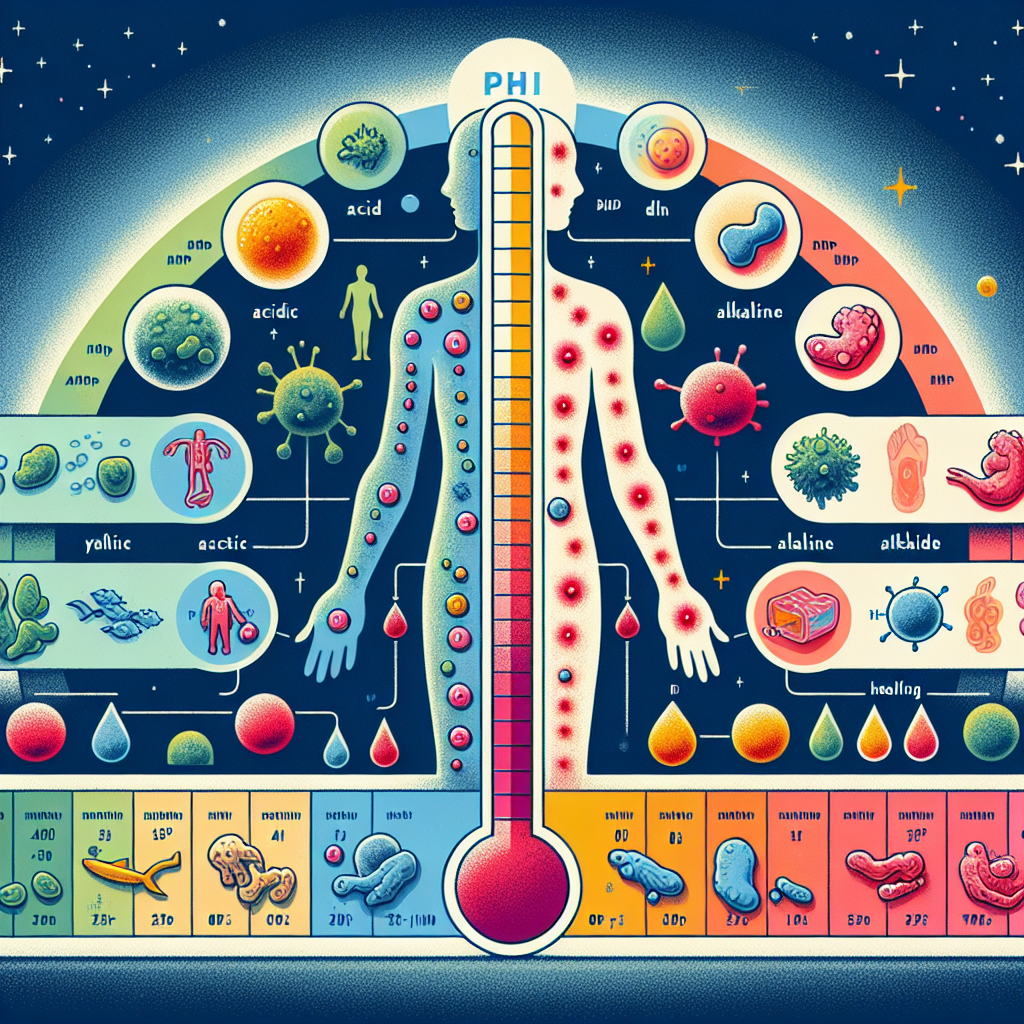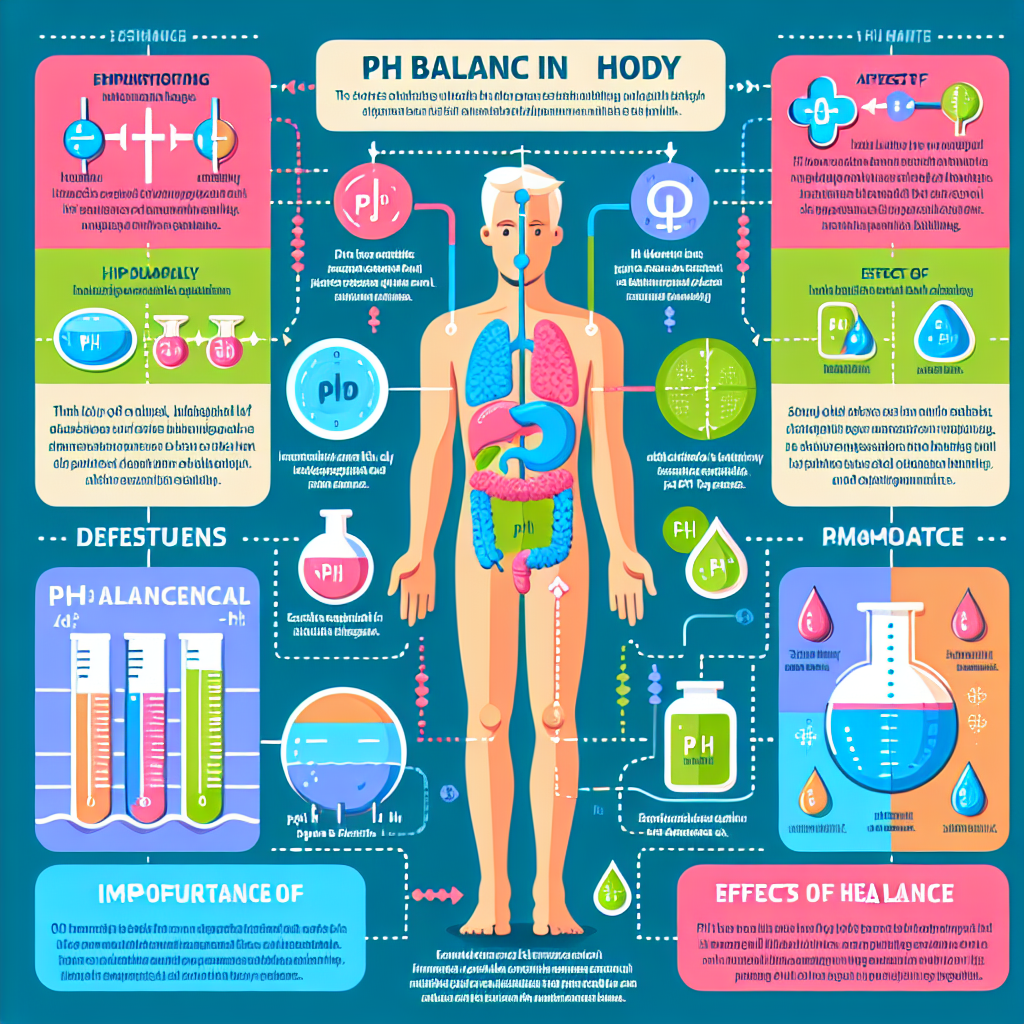Understanding Your pH Balance and Its Role in Healing

Discover the crucial role of pH balance in your body’s healing process. Learn more about how to understand and maintain your pH balance for optimal health. Visit My Vibrant Vitality now.
Exploring the Importance of pH Balance in the Healing Process
Understanding your pH balance and its role in healing is a crucial aspect of maintaining optimal health. The pH scale, which ranges from 0 to 14, is a measure of the acidity or alkalinity of a solution. A pH of 7 is considered neutral, while anything below 7 is acidic and anything above is alkaline. The human body, for optimal functioning, maintains a slightly alkaline pH balance of around 7.4. This balance plays a significant role in the healing process, and any deviation can have profound effects on your health.
To begin with, a balanced pH level is essential for the proper functioning of the body’s cells. Each cell in our body performs specific tasks that contribute to our overall health. However, these cells can only perform their functions effectively in a pH-balanced environment. When the body’s pH level is too acidic or too alkaline, it can disrupt cellular functions, leading to various health problems. For instance, an overly acidic environment can lead to inflammation, a common factor in many chronic diseases.
Moreover, pH balance is crucial for the immune system. The immune system, our body’s defense mechanism against disease-causing organisms, functions best in a balanced pH environment. An acidic environment can weaken the immune system, making the body more susceptible to infections and diseases. On the other hand, an alkaline environment can boost the immune system, enhancing its ability to fight off diseases and accelerate the healing process.
Furthermore, pH balance plays a vital role in the body’s ability to absorb vitamins and minerals. These nutrients are essential for healing and maintaining good health. However, an imbalanced pH can hinder the body’s ability to absorb these nutrients effectively. For example, an overly acidic environment can interfere with the absorption of calcium, a mineral crucial for bone health. Conversely, maintaining a balanced pH can enhance nutrient absorption, promoting faster healing and better health.
Additionally, pH balance is integral to the function of enzymes in the body. Enzymes are proteins that speed up chemical reactions in the body, and they are crucial for digestion, metabolism, and other bodily functions. However, enzymes require a specific pH to function optimally. An imbalanced pH can disrupt enzyme activity, leading to digestive issues and slowing down the healing process.
Lastly, pH balance is essential for detoxification. The body has its own detoxification system, which includes the liver, kidneys, and skin. These organs work together to remove toxins from the body, a process that is crucial for healing and maintaining good health. However, an imbalanced pH can hinder the body’s detoxification process, leading to a buildup of toxins that can further exacerbate health problems.
In conclusion, understanding your pH balance and its role in healing is crucial for maintaining optimal health. A balanced pH is essential for cellular function, immune system function, nutrient absorption, enzyme activity, and detoxification. By maintaining a balanced pH, you can enhance your body’s healing capabilities and promote better health. Therefore, it is important to monitor your pH levels regularly and make necessary dietary and lifestyle changes to maintain a balanced pH.
The Role of pH Balance in Promoting Health and Wellness

Understanding your pH balance and its role in healing is a crucial aspect of promoting health and wellness. The pH scale, which ranges from 0 to 14, is a measure of the acidity or alkalinity of a solution. A pH of 7 is considered neutral, while a pH less than 7 is acidic, and a pH greater than 7 is alkaline. The human body, in its infinite wisdom, maintains a slightly alkaline pH of around 7.4 in the blood. This delicate balance plays a pivotal role in the body’s overall health and its ability to heal.
The body’s pH balance is a critical factor in the function of our cells, tissues, and organs. It influences the activity of enzymes, the function of proteins, and the integrity of our DNA. When the body’s pH is balanced, these biological processes function optimally, promoting health and wellness. Conversely, when the body’s pH is imbalanced, it can lead to a variety of health issues.
An acidic pH can create an environment conducive to disease. It can impair the body’s ability to absorb minerals and other nutrients, decrease energy production in cells, and hinder the body’s ability to repair damaged cells. Moreover, it can also make the body more susceptible to fatigue and illness. On the other hand, an overly alkaline pH can also be detrimental, leading to issues such as muscle twitching, hand tremors, and nausea.
The body has several mechanisms to maintain its pH balance. These include the lungs, which remove carbon dioxide (a weak acid) from the body, and the kidneys, which excrete acids or bases to maintain the blood’s pH. However, these mechanisms can be overwhelmed by factors such as poor diet, stress, and environmental toxins, leading to a state of chronic pH imbalance known as acidosis or alkalosis.
Diet plays a significant role in maintaining the body’s pH balance. Consuming a diet rich in alkaline-forming foods, such as fruits and vegetables, can help to neutralize excess acidity in the body. Conversely, a diet high in acid-forming foods, such as meat, dairy, and processed foods, can contribute to an acidic pH. Therefore, a balanced diet that includes a variety of whole, unprocessed foods can support the body’s pH balance and promote health and wellness.
In addition to diet, lifestyle factors such as stress management and regular exercise can also influence the body’s pH balance. Chronic stress can lead to an acidic pH, while regular exercise can help to neutralize acidity and promote an alkaline pH. Therefore, adopting a balanced lifestyle that includes stress management techniques and regular physical activity can support the body’s pH balance and promote overall health and wellness.
In conclusion, understanding your pH balance and its role in healing is a crucial aspect of promoting health and wellness. By maintaining a balanced pH, you can support your body’s biological processes, enhance your ability to heal, and reduce your risk of disease. Whether through diet, lifestyle changes, or both, achieving and maintaining a balanced pH is a worthwhile goal for anyone seeking to optimize their health and wellness.
Decoding the Connection Between pH Balance and Healing Mechanisms
Understanding your pH balance and its role in healing is a crucial aspect of maintaining optimal health. The human body is a complex system that relies on a delicate balance of various factors to function properly. One such factor is the pH level, a measure of how acidic or alkaline a substance is. The pH scale ranges from 0 to 14, with 7 being neutral. Anything below 7 is considered acidic, while anything above is alkaline. The human body strives to maintain a slightly alkaline pH level of around 7.4 for optimal health.
The pH balance in our bodies plays a significant role in our overall health and well-being. It affects every cell in our body, influencing how well our bodies can absorb nutrients, repair damaged cells, and strengthen our immune system. When our pH levels are balanced, our bodies are better equipped to fight off disease and heal themselves. Conversely, when our pH levels are out of balance, it can lead to a variety of health problems, including fatigue, weight gain, poor digestion, and even serious illnesses such as cancer.
The connection between pH balance and healing mechanisms is deeply rooted in the body’s ability to maintain homeostasis. Homeostasis is the body’s ability to maintain a stable internal environment despite changes in external conditions. This includes regulating temperature, blood pressure, and pH levels. When our pH levels are balanced, our bodies are in a state of homeostasis, which allows our cells to function properly and our bodies to heal effectively.
However, our modern lifestyles often disrupt this delicate balance. Factors such as poor diet, stress, lack of exercise, and exposure to toxins can all contribute to an overly acidic environment in our bodies. This can hinder our bodies’ healing mechanisms, making it more difficult for us to recover from illness or injury.
Fortunately, there are steps we can take to help restore our pH balance and enhance our bodies’ healing capabilities. One of the most effective ways to do this is through our diet. Consuming a diet rich in alkaline-forming foods, such as fruits, vegetables, nuts, and seeds, can help to neutralize excess acidity in our bodies. Additionally, staying hydrated by drinking plenty of water can also help to maintain a healthy pH balance.
Regular exercise is another important factor in maintaining a healthy pH balance. Exercise helps to stimulate the lymphatic system, which aids in the removal of acidic waste products from the body. Furthermore, stress management techniques such as meditation and yoga can also help to restore pH balance by reducing the production of cortisol, a hormone that can contribute to acidity in the body.
In conclusion, understanding your pH balance and its role in healing is an essential part of maintaining optimal health. By taking steps to maintain a healthy pH balance, you can enhance your body’s natural healing mechanisms and protect yourself against a range of health problems. Remember, a balanced body is a healthy body.